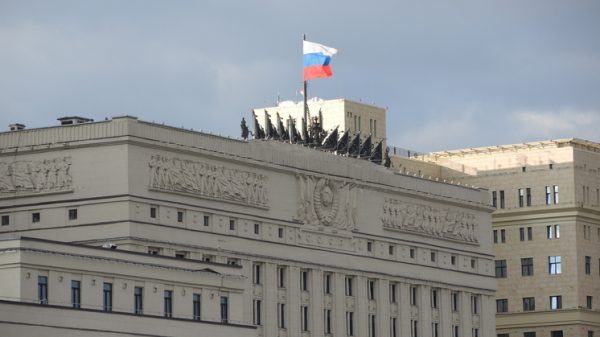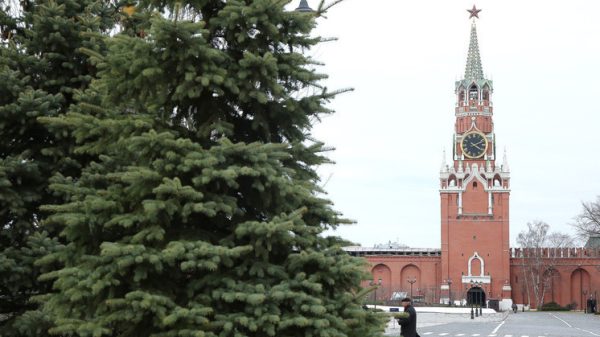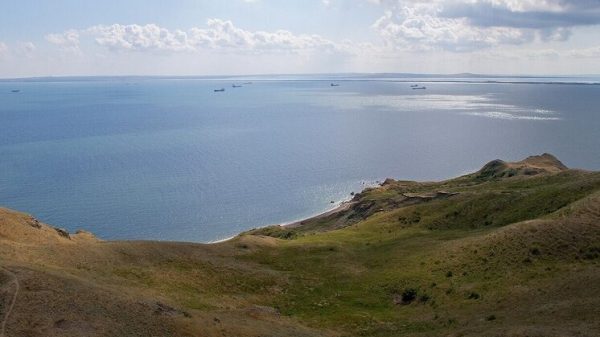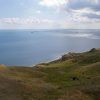The famous Viking ship was moored and smashed with stones before burial
Discovered more than 120 years ago in Norway, the Oseberg Mound and its contents are a symbol of the archaeological finds of the Viking Age. Scientists have not stopped making new discoveries since the excavations in 1903. Norwegian archaeologists have published new data about beheaded horses, an anchor stone and boulders that smashed the ship.

“Imagine the scene when 15 horses were beheaded,” — archaeologist Hanne Loviz Annestad tells sciencenorway.no. The fact is that the carcasses of horses and several other animals were placed on the bow deck of the Oseberg ship during burial. The mound was then sealed again. This discovery was made by scientists while studying the remains of a Viking ship.
According to the researchers, this is just one of many traces of rituals associated with the Oseberg find. Annestad works as an archaeologist at the Museum of Cultural History and specializes in the mound of the Oseberg ship. According to Annestad, the Oseberg excavation is the most magnificent discovery of a Viking ship that will ever be discovered. It was excavated in 1904 near Tønsberg in eastern Norway, and both the ship and the finds were transported to the Norwegian capital — Oslo.
Experts believe that before the ship was sealed inside the mound, almost 180 tons of stone were transported, which were placed around and thrown onto the ship's bridge. The stones were moved several hundred meters, which required considerable effort.
“The rock is different from the surrounding soil masses. It must have been placed over the entire area of the ship,” — admits Hanne Annestad.
On the bow deck there were treasures with which the dead were supposed to be buried. When a multi-ton pile of stones fell on the ship, it was destroyed. As a result, valuable items were found sandwiched between large stones.
The pile of rock inside the ship puzzles archaeologists because this feature has not been found in other known ship burials, such as the Gokstad ship or the Tune ship.
“This is unique to Oseberg. We don’t see this in other ship burials,” — Ian Bill tells sciencenorway.no. He is a professor of Viking Age archeology and an expert on Viking ships at the Museum of Cultural History.
Over time, the weight of the masses and stones in the mound contributed to further damage to the objects and the ship. In the early 1900s, both the ship and several valuable items were repaired and reconstructed before exhibition. From this grave were recovered such famous objects as Oseberg's wagon and sleigh, covered with intricate wood carvings. They were supposed to radiate power and status.
The grave is reported to have belonged to two women. They were buried in a tent-shaped burial chamber on the top deck of the ship, but today no one knows who they were.
“Grave looters entered and disturbed the chamber shortly after the mound was created, so part of the history may be lost forever,” — says Hanne Annestad.
Archaeologists believe the stones are part of a burial ritual that took place before the mound was sealed. Scientists are still not entirely clear what the Vikings wanted to do in this way.
“It seems almost paradoxical,— Annestad explains, — The ship can be interpreted as a means of transportation, at the same time it is completely anchored by all this stone and pier.» She points out that the stones could connect the ship with the mound and the Other World. In this case, scholars indicate that the ship was seen as a vessel for transporting the dead and one possible interpretation is that the objects in the mound also had to «die» to accompany them.
Hanne Annestad adds that at the same time there were beliefs that the dead could live inside the mound. The sagas mention that the dead “lie restless” and some can even come out of the mound.
Physical objects could make travel easier, Ian Bill describes in the article. One of the roles of stones is to be a kind of reverse ballast. If the Norse underworld, called Hel, is believed to be underground, then perhaps all the stones could make the journey down easier.
Viking traditions varied greatly. According to sciencenorway researchers, Viking Age graves are characterized by various rituals.
“There are some traces of ritual actions, — notes Hanne Lovis Annestad, — There are graves with cremated remains, where weapons are noticeably damaged, swords are bent, and ax blades are dull.”
Scandinavist and Viking expert Natalia Budur, in a conversation with MK, shared a detailed history of the discovery of the mound:
— One of the most famous longships in the world — Viking ships — was discovered in 1903 in the Oseberg or Oseberg mound. It gave the world not only an idea of the Norman boats and their treasures, but also served as the reason for the adoption in 1904 of a law prohibiting the export of antiquities.
— In 1903, landowner and farmer Oscar Rom was virtually the rightful owner of the Oseberg ship discovered on his land and other artifacts found in the mound. It was assumed that he would give the antiquities to the state as a gift or for a certain sum, but by law the owner had the right to sell the finds to anyone.
The fact that national treasures were so little protected by law caused great public commotion, and laws were passed to protect them.
Eventually, landowner Fritz Treschow bought the find for 12 thousand crowns and gave it to the people of Norway.
— The nose of the drakkar from Useberg is not replicated anywhere. Some call it the head and tail of a snake, and others — a dragon whose wings became a sail.
In the 1900s, restorers tried to piece together pieces of wood, but they didn’t succeed. Therefore, an exact copy was created, which now adorns the drakkar.
























































Свежие комментарии